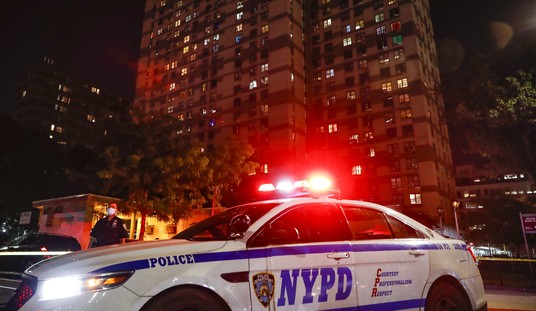The city of Galway in Ireland is building a monument to Ernesto “Che” Guevara de la Serna y Lynch. That last word in his full nomenclature accounts for the honor. Che’s maternal grandmother, Ana Isabel Lynch, was born in Galway, and while still a lassie, moved to Argentina.
The City Council in heavily unionized Galway where the Labour Party holds a majority approved the plans for the monument unanimously. But the monument to labor union- buster (with firing squads, torture and forced labor camps) Che Guevara was proposed and championed by city Councillor Billy Cameron, who boasts of his credentials as a “trade union activist.”
Cuba’s Stalinist regime (that to this day outlaws trade unionism under the above-mentioned penalties) will fund the trade union-championed monument.
“By no means can Cuban workers go on strike!” declared Cuba's "Minister of Industries” on June 26, 1961.“Cuban workers must adjust to life a collectivist social order.” This Minister of Industries, in case you haven’t guessed, was Ernesto Guevara de la Serna y Lynch, famous “son” of union-loving Galway.
Don't look for this on NPR or The History Channel, much less in your college textbooks, but among the first, the most militant, and the most widespread opposition groups to the Stalinism Ernesto "Che" Guevara (who often cheekily signed his named as "Stalin II") imposed on Cuba came from Cuban labor groups.
And who can blame them? Here's a report from the International Labor Organization on Cuba circa 1957: "One feature of the Cuban social structure is a large middle class," it starts. "Cuban workers are more unionized (proportional to the population) than U.S. workers. The average wage for an 8-hour day in Cuba in 1957 is higher than for workers in Belgium, Denmark, France and Germany. Cuban labor receives 66.6 per cent of gross national income. In the U.S. the figure is 70 per cent, in Switzerland 64 per cent. 44 per cent of Cubans are covered by Social legislation, a higher percentage than in the U.S."
Recommended
In 1958, Cuba had a higher per capita income than Spain, Austria or Japan. Cuban industrial workers had the eighth-highest wages in the world. In the 1950s, Cuban stevedores earned more per hour than their counterparts in New Orleans and San Francisco.
For obvious reasons, thousands of these men took up arms against Che Guevara. The MRP (Movimiento Revolucionario del Pueblo) was among these Cuban resistance groups of mostly laborers. Here's how the FBI and CIA described them: "Heavily weighted labor membership, with socialistic leanings. Aimed for Castro overthrow from within; advocated nationalization of economy, agrarian reform, social reform."
Many opponents of the regime Che Guevara co-founded qualify as the longest-suffering political prisoners in modern history, having suffered prison camps, forced labor and torture chambers for a period three times as long in Che Guevara’s Gulag as Alexander Solzhenitsyn suffered in Stalin’s Gulag.
Given their rights in pre-Castro Cuba, the Guevara-imposed "no strike" provision was obviously unacceptable to Cuban laborers -- many of whom took up arms in protest, along with Cuba’s enraged campesinos who rose in arms by the thousands when Castro and Che started stealing their land to build Soviet Kolkhozes. Soviet agricultural "advisors," still flush from their success against their own campesinos in the Ukrainian Holocaust, were among the top advisors of Cuba’s then “Minister of Industries” (Che Guevara.)
This anti-Stalinist rebellion, involving ten times the number of rebels, ten times the number of casualties, and lasting twice as long as the puerile skirmish against Batista, found no reporter anywhere near Cuba's hills. The Cuban farmers’ and laborers’ desperate, bloody and lonely rebellion against their enslavement spread to the towns and cities and lasted from late 1959 to 1966. Castro himself admitted that his troops, militia and Soviet advisors were up against 179 different "bands of bandits" as they labeled these freedom-fighting rednecks and working men. Tens of thousands of troops, scores of Soviet advisors, and squadrons of Soviet tanks, helicopters and flame-throwers finally extinguished the lonely Cuban freedom-fight. Elsewhere they call this "an insurgency," and reporters flock in to “embed” and report.
This ferocious guerrilla war, waged 90 miles from America's shores, might have taken place on the planet Pluto for all you'll read about it in the MSM and all you'll learn about it from The History Channel or NPR. To get an idea of the odds faced by those rural rebels and laborers, the desperation of their battle and the damage they wrought, you might revisit Tony Montana during the last 15 minutes of "Scarface."
“Certainly we execute!” boasted Che Guevara while addressing the hallowed halls of the U.N. General Assembly Dec. 9, 1964. “And we will continue executing as long as it is necessary!” According to the “Black Book of Communism,” those firing-squad executions (murders, actually; execution implies a judicial process) had reached 16,000 by the end of the ’60s, the equivalent, given the relative populations, of almost a million executions in the U.S. “I don’t need proof to execute a man,” snapped Che to a judicial toady in 1959. “I only need proof that it’s necessary to execute him.”
This proof often consisted of nothing more than a Cuban man’s trade union activism. Just thought Galway’s City Council should know this.

























Join the conversation as a VIP Member